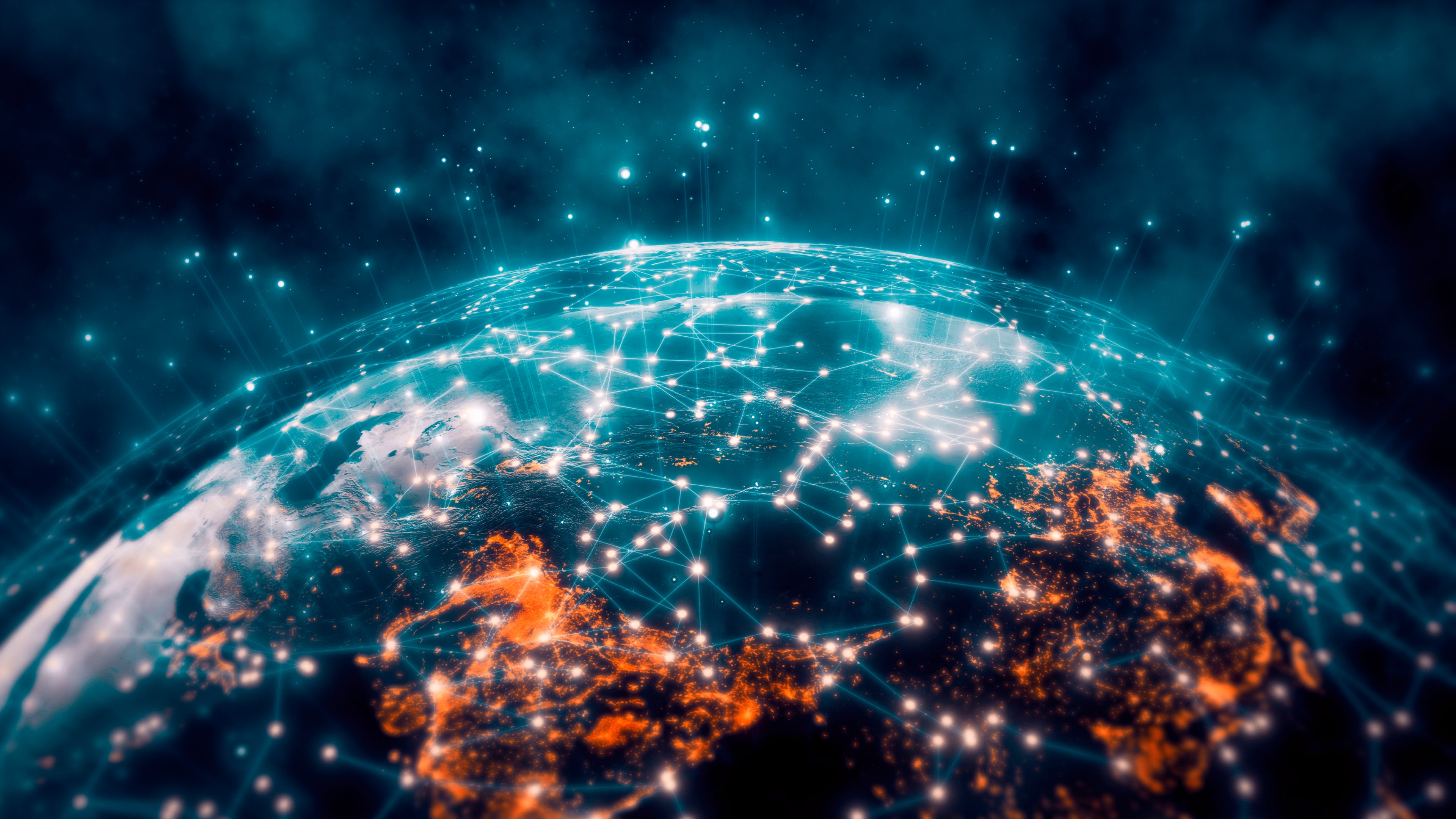How AI infrastructure could become the backbone of a sustainable future

Building AI infrastructure around sustainable power can unlock benefits far beyond emissions reductions.
Image: starline/Freepik
Stay up to date:
Artificial Intelligence
- AI is a defining force of our era and embedded in everyday systems we rely on – from healthcare to education and manufacturing.
- Yet as AI adoption accelerates, we must consider where the energy will come to power the required data centres.
- Low-carbon energy solutions that can scale alongside digital infrastructure will become increasingly essential.
The rise of artificial intelligence (AI) is no longer a distant headline – it’s a defining force of our era. From healthcare and education to manufacturing and climate resilience, AI is already embedded in the systems we rely on every day.
As governments and businesses accelerate AI adoption, the focus has largely been on algorithms, hardware and talent, but one of the most urgent and under-discussed questions remains: Where will the energy come from to power it all?
AI is only as clean, inclusive and scalable as the infrastructure beneath it. The early months of 2025 have made one thing clear: the data centre energy demand tied to AI is accelerating faster than the current energy systems that power it.
According to the Electric Power Research Institute, the US data centre industry could consume as much as 9% of all power on the grid by 2030. How we meet this demand quickly and cleanly will shape not only the environmental footprint of the AI era but also its global accessibility and economic impact.
We need AI, but we also need it to be clean
AI isn’t just a buzzword anymore. Whether you understand the mechanics or not, it’s reshaping industries, revolutionizing research and redefining the modern economy. AI has become a foundational layer of innovation, but beneath its sleek digital surface lies an increasingly urgent problem: energy.
The International Energy Agency (IEA) estimates that global electricity demand from data centres could exceed 945 terawatt-hours (TWh) by 2030 – more than double current levels and comparable to the entire electricity use of Japan today.
AI is the single largest driver of this surge, with AI-optimized data centres expected to quadruple their electricity use in just five years. In the US alone, data centres are poised to account for nearly half of the country’s electricity demand growth between now and 2030.
Yet if this growth is powered by fossil fuels or limited by outdated grid infrastructure, the digital revolution could become a climate liability rather than a solution.
The next energy frontier for AI
As AI accelerates, so does the need for a more robust and sustainable energy backbone. Today, most data centres are powered by conventional grid electricity, often supplemented by diesel generators, natural gas and lithium-ion batteries.
While these systems have supported past computing demands, they are increasingly too carbon-intensive, costly and constrained to support the scale and speed required by AI development.
In response, developers and policy-makers are eager for new generations of energy solutions that can deliver clean, reliable andaffordable power quickly and on-demand. Solutions like advanced nuclear, geothermal and dispatchable solar.
Advanced nuclear and geothermal technologies offer immense long-term potential – delivering firm, zero-carbon energy with minimal land use and high reliability. These solutions could play a transformative role in powering the AI era. However, their broader deployment is often constrained by lengthy permitting processes, infrastructure requirements, ‘NIMBY-ism’ and multi-year development timelines.
In contrast, dispatchable solar – solar energy paired with thermal storage – is showing promise as a scalable and near-term alternative. These systems capture solar energy and store it as heat, which can be converted into electricity on demand, enabling up to 24 hours of clean power delivery.
This makes them especially well-suited for energy-intensive applications like AI data centres, where uptime and reliability are critical. Unlike lithium-ion batteries, thermal storage systems do not degrade with repeated use, offering a more resilient and cost-effective approach to supporting AI workloads around the clock.
Where does all the energy go?
Recent data from Wood Mackenzie indicates that US data centre pipeline capacity has exploded to over 92 gigawatts (GW) as of the end of 2024, nearly 20 times what it was at the start of 2023.
Monthly additions now exceed 7 GW, with developers expanding beyond traditional tech hubs to build large-scale campuses in new regions. This rapid growth introduces significant energy demands in areas that may lack adequate grid infrastructure or access to clean generation.
Accept our marketing cookies to access this content.
These cookies are currently disabled in your browser.
Dispatchable, site-flexible technologies make it possible to build high-performance data centres in places once considered “off-grid”. By using thermal storage to decouple energy generation from energy use, these systems eliminate the need to be directly tied to grid peaks or fossil fuel backup.
This flexibility can support the development of data centres in remote, underserved or rapidly developing regions, helping broaden digital access while maintaining sustainability goals.
A global model for sustainable infrastructure
We’re entering an era where intelligence, computation and autonomy are becoming foundational to every sector. But these systems don’t run on code alone. They require real, physical energy – and lots of it.
Achieving this requires a rethinking of the global energy mix. Many current sources remain vulnerable to supply chain disruptions and geopolitical risk. Replacing fragile, fossil-based systems with firm, low-carbon energy solutions that can scale alongside digital infrastructure is essential.
What is the World Economic Forum doing about the Fourth Industrial Revolution?
By combining technologies such as advanced nuclear, geothermal and dispatchable solar, we can create resilient, low-emissions infrastructure to support the next wave of digital expansion.
Moreover, building AI infrastructure around sustainable power can unlock benefits far beyond emissions reductions. It decentralizes computing, promotes regional economic development and strengthens energy security, helping to align climate and technology policy.
We don’t need to choose between accelerating AI growth and meeting climate goals. But we do need to act with urgency and foresight. AI may reshape how the world operates, but its long-term benefits depend on reimagining how it is powered. As data centres grow in scale and influence, they must be built on an energy foundation that is resilient, affordable and secure.
Don't miss any update on this topic
Create a free account and access your personalized content collection with our latest publications and analyses.
License and Republishing
World Economic Forum articles may be republished in accordance with the Creative Commons Attribution-NonCommercial-NoDerivatives 4.0 International Public License, and in accordance with our Terms of Use.
The views expressed in this article are those of the author alone and not the World Economic Forum.
Forum Stories newsletter
Bringing you weekly curated insights and analysis on the global issues that matter.
More on Fourth Industrial RevolutionSee all
Mohammad Isham Jaafar and Gong Yingying
July 22, 2025
Neeka Mashouf and Leila Mashouf
July 15, 2025




